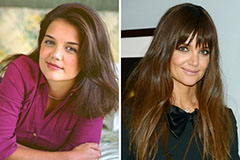The field of audiology, dedicated to the research study and treatment of hearing loss and balance conditions, has undergone a significant improvement over the centuries. From its inception as a fundamental questions into the nature of noise and hearing to today's sophisticated, technology-driven discipline, audiology has constantly progressed. This article traces the historical milestones and essential discoveries that have actually formed the modern practices of hearing care.
The Early stages of Audiology
The origins of audiology can be gone back to ancient periods when societies such as the Egyptians and Greeks were the first to identify and tape-record hearing problems. It was not till the 19th century that a more methodical examination of hearing started. The development of the ear trumpet in the late 18th century, a basic tool developed to boost for those with hearing challenges, represented one of the initial efforts to deal with hearing loss.The Beginning of More Modern Audiology
Following World War II, audiology experienced a considerable pivotal moment when many veterans returned with hearing loss due to direct exposure to loud noises throughout the war This led to a pressing demand for better treatments and services, prompting the formalization of audiology as a profession. At first concentrating on fundamental tests to examine hearing loss, audiologists then advanced to advanced methods for assessing hearing capabilities.Technological Developments and Important Learnings
Among the most significant advancements in audiology included the development of the electronic hearing aid in the 20th century. Early designs were large and minimal in performance, however the advent of digital technology in the latter half of the century reinvented listening devices style, making gadgets smaller sized, more effective, and capable of providing a clearer sound quality.The 1970s saw a significant advancement with the development of cochlear implants, which are sophisticated electronic devices that can stimulate the auditory nerve to assist people with extreme deafness who do not gain from routine hearing aids. Throughout the years, audiological research study has expanded to explore not only the physical aspects of hearing loss but also the psychological and social impacts, recognizing how hearing difficulties can affect communication, thinking, and overall well-being. This expanded viewpoint on hearing health has actually promoted a more inclusive treatment technique that integrates technical interventions with therapy and auditory rehabilitation.
The Current Digital Era and Beyond
Currently, audiology is at the forefront of the digital age, with progress in expert system (AI), telehealth, and individualized medication influencing the direction of hearing healthcare. Contemporary hearing devices such as hearing help and cochlear implants make use of AI innovation to adapt to different surroundings, using a high degree of clearness and customization. The schedule of tele-audiology services, enabled by internet connections, has increased the availability of hearing care by making it possible for remote assessments, fittings, and discussions.More
Audiology has advanced thanks to the imagination and determination of researchers, and individuals looking for treatment. Progressing, the field is set through innovation, pushing the in our understanding and take care of hearing and balance problems. With continual enhancements in innovation and a better understanding of how hearing loss impacts individuals, audiology makes sure to further enhance its influence on worldwide quality of life.The development of audiology, spanning from primitive ear trumpets to sophisticated AI-driven hearing gadgets, testifies to humankind's extraordinary accomplishments in resolving the intricacies of hearing impairment. This storyline exemplifies our perpetual pursuit of understanding, development, and refinement, highlighting our steadfast dedication to understanding the complexities of sound and human connection.
 Christina Ricci Then & Now!
Christina Ricci Then & Now! Katie Holmes Then & Now!
Katie Holmes Then & Now! Barbi Benton Then & Now!
Barbi Benton Then & Now! Andrew McCarthy Then & Now!
Andrew McCarthy Then & Now! Barbara Eden Then & Now!
Barbara Eden Then & Now!